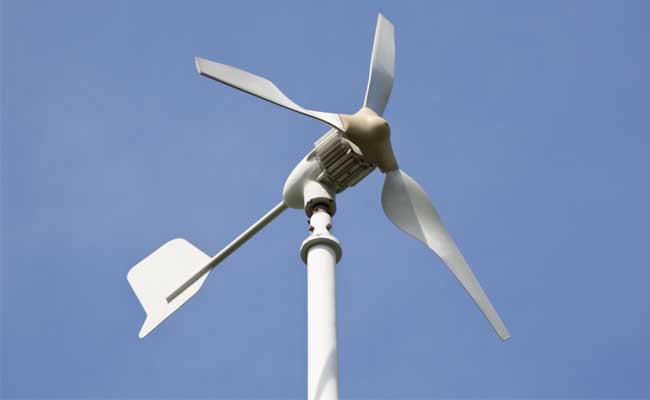Small wind mill turbines use a tail vane to adjust their direction. When the rotor does not align with the wind, the airspeed on both sides of the tail vane differs, creating a pressure imbalance that helps reposition the turbine.
Large wind turbines rarely include tail vanes because of their heavy weight. A tail vane large enough to generate the required force would be impractical. Instead, large wind turbines rely on:
- Yaw control systems, which connect the nacelle to the tower with large roller bearings or sliding gear rings, enabling controlled rotation.
- Motor-driven alignment, ensuring the rotor stays perpendicular to the wind and captures maximum energy.
Wind turbines operate most efficiently when aligned with the wind. At a perfect perpendicular angle:
- The rotor’s angle with the wind direction has a tangent value of 1.
- The system avoids energy loss, converting wind energy fully into rotational motion.
For small wind mill turbines, the tail vane automatically adjusts the direction:
- If the tail vane tilts at an angle, it experiences a tangential force.
- This force rotates the turbine around the tower until it faces directly into the wind.
- Two ultrasonic anemometers measure wind speed and direction by analyzing airspeed variations.
As the rotor blades spin at high altitudes, they generate clean energy from natural wind. Wind conditions cause fluctuations in power output, but the voltage remains stable. The electricity follows a structured transmission process:
- The wind mill turbine generates power and steps it up to 35kV within the tower.
- The system transmits the electricity to a wind farm substation.
- The power then enters the grid for distribution.
By utilizing natural wind resources efficiently, this green energy solution provides a sustainable power source.

